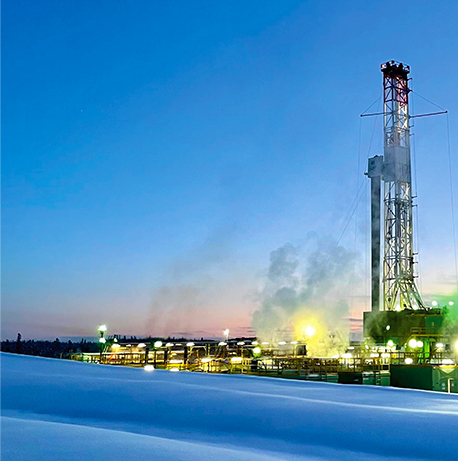Demand for GIS Developers Continues to Expand
Across sectors, organizations are increasingly leveraging geospatial intelligence to enhance decision-making, whether they are working on urban planning, environmental science, logistics, or public safety projects. The global geographic information system (GIS) market is projected to grow at a compound annual rate of 14.2%, increasing from $14.6 billion in 2025 to $28.3 billion by 2030. This growth signals a rapidly expanding demand for GIS developers.
Hiring managers face various challenges in the GIS candidate pool. The ideal professional possesses not only foundational GIS knowledge but also a mastery of modern tooling such as cloud services, Python scripting, interactive mapping platforms, and spatial data pipelines. Candidates with command of such complex and interdisciplinary abilities are both rare and coveted.
In this guide, you’ll gain the confidence to evaluate and hire the best GIS developers while navigating the nuances of the technical skill set required. Understanding developer skill level variations, complementary software requirements, and rigorous interview questions ensures your candidates have the real-world geospatial experience to make your team thrive.
What Attributes Distinguish Quality GIS Developers From Others?
GIS developers create systems that analyze and visualize raw spatial data inputs, producing rich, interactive tools for teams and customers. Their business intelligence supports decision-making across industries ranging from urban planning and logistics to energy and defense.
The top candidates bring unique, interdisciplinary skills to the table, combining full-stack development skills and in-depth geospatial theory with applied problem-solving experience and project management. Enterprise-scale solutions require engineers who are prepared to customize and scale geospatial solutions rather than professionals who merely operate off-the-shelf GIS software—ensuring accuracy, reliability, and strong performance.
Spatial Database Design and Data Accuracy: GIS developers design databases that efficiently store and query massive amounts of geospatial data. Doing so requires an understanding of platforms like PostGIS or Oracle Spatial, indexing methods like R-trees or quadtrees, normalization techniques, and coordinate reference systems. In addition, to guarantee data accuracy and interoperability, engineers must understand international geospatial standards (e.g., OGC, ISO 191xx) and metadata management—especially in datasets dealing with regulatory compliance or safety-critical information.
Programming, Automation, and Integration: Programming skills extend GIS functionality and allow engineers to achieve essential business goals, but top candidates combine coding expertise with workflow automation and system integration to streamline spatial data processing. Candidates should be able to write custom scripts, automate repetitive tasks with ETL workflows, and create interactive web mapping applications using programming languages like Python, JavaScript, or C#. API development and integration are also essential: most projects require that developers connect GIS platforms to external systems (e.g., ERP, CRM, IoT, or analytics systems). Strong software developers can deliver dynamic dashboards and applications that accelerate business analysis and operate seamlessly within a broader tech stack.
Spatial Analysis and Modeling: To transform raw data into operational decisions, mastery of advanced spatial analytics is necessary. Candidates should be comfortable with proximity analysis, network analysis, terrain modeling, and raster and vector data processing. Ensure a developer’s expertise goes beyond theory; the best hires have experience with real-world use cases for spatial computation, like optimizing delivery routes with network datasets or identifying flood risk zones with LiDAR.
Visualization and User Experience: Even the most technically robust GIS is ineffective if stakeholders can’t interpret its data. Understanding best practices in front-end development ensures that complex spatial findings are actionable to technical and non-technical users alike. Professionals should be able to design clean, user-friendly dashboards and web maps and apply clear cartographic principles, symbology, and labeling.
How Can You Identify the Ideal GIS Developer for You?
Effective hiring starts with translating your business needs into a clear problem statement. In the context of GIS development, for example, do you need to optimize delivery routes, build a large environmental monitoring platform, or manage an expanding volume of spatial data? Next, your project’s scale and complexity will determine the expertise level required, whether you need a junior GIS developer for day-to-day mapping tasks or a senior architect to design the entire system from scratch.
It is important to note that not every project requires a senior expert; the appropriate developer level for your project balances saving costs with meeting performance needs. While a simple web map application could be handled by a mid-level developer familiar with the proper libraries, a city planning department project integrating geospatial AI models demands a senior professional with advanced data skills. Ultimately, the right hire depends on your industry, project complexity, organizational structure, and team skill gaps.
Talent Levels: Junior vs. Mid-level vs. Senior Engineers
Junior engineers typically possess fewer than two years of experience and are best suited for teams with well-defined workflows, strong leadership, and low-risk projects. They are familiar with the basics—GIS software (e.g., ArcGIS, QGIS), data visualization, and standard analysis—and are prepared to perform straightforward map production, data cleaning, and spatial analysis tasks under the supervision of a senior mentor. While junior engineers can iterate on deliverables quickly, they may not be capable of designing large-scale systems or implementing automation.
Mid-level engineers have between two and five years of experience and act as strong independent contributors on moderately complex projects requiring both execution and geospatial innovation. They can be expected to build custom tools, geoprocessing models, and complex spatial datasets; they work across teams and integrate GIS with business applications. Mid-level engineers are suitable for growing organizations but may not yet be prepared for larger, high-stakes projects, such as building entire enterprise-level architectures from scratch.
Finally, senior engineers, with over five years of experience, are experts at the top of their field, prepared to lead entire teams, work on complex technical challenges, and secure stakeholder buy-in on mission-critical projects. They understand how to architect enterprise GIS, optimize data storage and performance, or manage multi-source data integrations. Beyond engineering tasks, they mentor junior team members, establish data standards, and future-proof systems through repeatable and automated workflows.
Complementary Technical Skills
When searching for the right hire, consider the complementary skills required for your project and industry. Do you need a specialist to fix a specific challenge, such as a database performance bottleneck? A senior generalist to build an entire GIS ecosystem from scratch? Or an expert with advanced spatial statistics and data science abilities to work on a research-intensive project (e.g., environmental modeling)?
Your existing team and technology stack should drive your complementary skill requirements. However, the following abilities can act as a starting point, as they are considered increasingly important for improved performance, scalability, and business outcomes.
Cloud GIS and DevOps: Cloud expertise is critical for businesses managing high-volume or real-time data, enabling improved storage and uptime while reducing costly hardware investments. Engineers should have experience using common cloud platforms (e.g., AWS, Azure, or Google Cloud) and understand DevOps practices like CI/CD pipelines, automated testing, and containerization. Look for candidates who can set up infrastructure-as-code, automate provisioning, and integrate cloud-native tools like AWS Lambda or Azure Functions for geoprocessing tasks.
Web Mapping and Front-end Development: Experts proficient in libraries for dynamic maps (e.g., Leaflet, OpenLayers, or Mapbox GL) build responsive web mapping apps with easy-to-interpret spatial data. Mastery of front-end frameworks like React, Vue, or Angular further enhances a web app’s UI/UX and cross-platform compatibility. These skills are critical for client-facing industries requiring buy-in from non-technical stakeholders (e.g., real estate or city planning).
ETL and Multi-source Data Management: Geospatial data is often fragmented across multiple, inconsistent sources (e.g., satellite imagery, IoT sensors, field surveys). When dealing with complex datasets, search for an expert who is prepared to clean, normalize, transform, and validate these datasets using ETL tools like FME, GDAL, or ArcPy to ensure data consistency and accuracy. Automating these processes with scripts and workflows will further minimize errors and streamline analysis—this should be considered a requirement for organizations receiving frequent data updates.
Remote Sensing and Raster Data Analysis: Projects using satellite or drone imagery—often in industries like agriculture, forestry, and disaster response—depend on remote sensing experts. These specialists preprocess and analyze raster data, perform classification, extract features, and calculate indices like NDVI for vegetation monitoring. In addition, understanding machine learning workflows and tools like ERDAS IMAGINE, ENVI, or open-source solutions (e.g., QGIS and Rasterio) allows engineers to perform advanced analytics.
How to Write a GIS Developer Job Description for Your Project
A tailored job description attracts the right talent to apply for your role. The first thing a candidate will notice is the job title. GIS developers can fill various roles, and a title that effectively conveys specialization and seniority level will streamline hiring—for example, Junior GIS Analyst, Remote Sensing Specialist, or Senior GIS Solutions Architect.
The body of your job posting should begin with a clear description of your project goals and how the role will impact your business (e.g., custom applications, enterprise-level data management, real-time geospatial analysis). Next, detail the core skills required (e.g., spatial data modeling, mapping software proficiency) and complementary technical abilities (e.g., Python or cloud deployment); be specific about your team’s tech stack (e.g., ArcGIS, QGIS, PostGIS) and the desired years of experience.
What Are the Most Important GIS Developer Interview Questions?
The right interview questions reveal whether developers can translate their technical skills into tangible business outcomes. Top experts possess deep theoretical and technical knowledge alongside real-world problem-solving, from designing spatial database schemas to optimizing geoprocessing workflows.
Describe your experience integrating GIS with other business systems.
GIS is most valuable when operating in a broader enterprise ecosystem and rarely functions in isolation; integrations help with predictive analytics, real-time asset monitoring, automated compliance reporting, and supply chain optimization. Candidates should be able to speak to their experience integrating GIS with APIs, enterprise data warehouses, or streaming IoT data. They might describe connecting it with ERP (e.g., SAP), CRM (e.g., Salesforce), or analytics platforms (e.g., Tableau). The best answers tie technical methods to real-world outcomes; for example, a candidate might describe combining IoT water sensor networks with GIS to predict maintenance needs and reduce downtime.
How would you optimize a large spatial dataset in a web mapping app versus an enterprise database?
Poorly optimized datasets can make GIS unusable for users and drive up cloud costs; developers must know how to design scalable systems across different deployment contexts. For web applications, candidates might mention strategies like server- or client-side caching, appropriately taking advantage of vector or raster tiling, and employing cloud storage solutions like S3 for cost control. For enterprise databases, they should focus on backend methods like spatial indexing, query optimization, clustering, and table partitioning.
How do you handle incomplete or inconsistent spatial data?
Many organizations struggle with messy or incomplete datasets. A strong candidate might suggest supplementing missing data with open datasets, remote sensing imagery, or commercial providers to address incompleteness. To mitigate inconsistencies, they may describe using techniques like geocoding, interpolation, or data conflation. The best candidates outline a structured approach that tracks data quality in the long term with robust metadata.
How do you ensure data accuracy and quality when working with multiple sources?
Almost all GIS projects involve integrating spatial data from different sources and formats; it is critical that any candidate can enforce data quality control standards to achieve regulatory compliance and build user-friendly, cost-effective systems. Common successful approaches include schema validation, coordinate reference system checks, topology validation, and metadata management; candidates may also mention automating QA with custom Python scripts.
Why Do Companies Hire GIS Developers?
GIS developers do more than create maps—the best experts transform raw spatial data into business insights by cleaning, analyzing, mapping, and visualizing complex data across multiple sources. These specialists improve operational efficiency, facilitate resource allocation, and support predictive modeling in logistics, environmental planning, and asset management domains. The ideal candidate designs for scalability and integrates with enterprise systems for maximized efficiency.
High-performing GIS developers bring not only technical expertise but also strategic vision, uncovering findings from datasets that would otherwise be missed and using predictive modeling to inform long-term planning. Choosing the right talent—whether a mid-level engineer for independent project ownership or a senior architect for strategic initiatives—directly impacts decision-making speed and accuracy and provides a competitive business advantage.


























